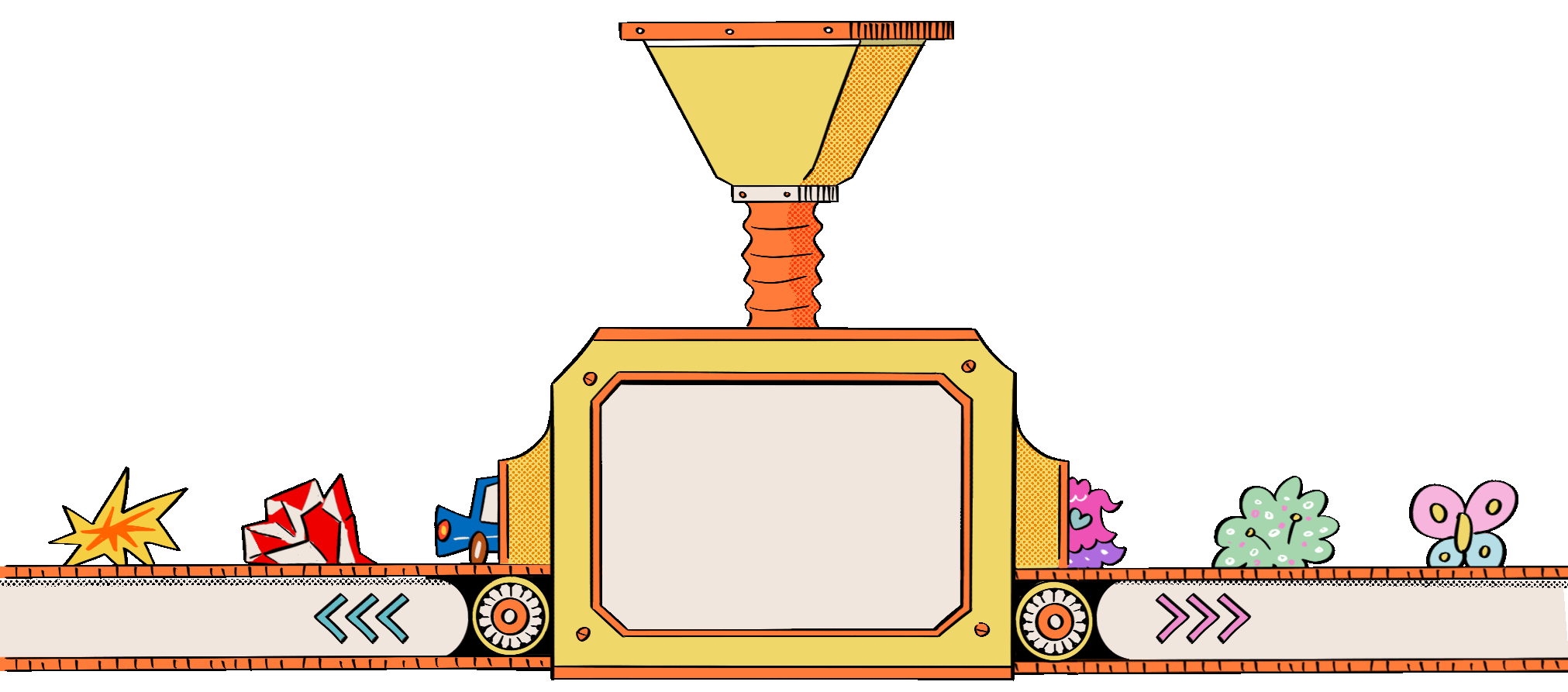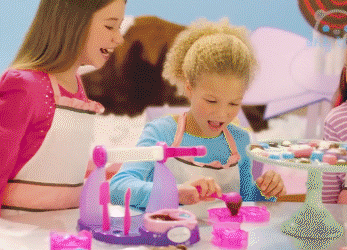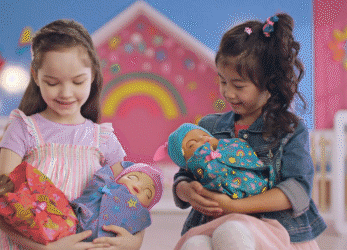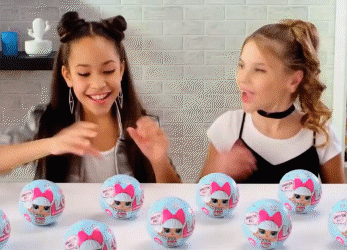


In what ways do toys for girls and boys differ?


Curiously, gender-typing goes much deeper than just a simple colour divide. For instance, in the early 1900s, girls’ toys focused on homemaking skills with toys like kitchen sets and sewing kits, whereas toys for boys prepared them for the industrial economy with constructing toys.
Gender-coding is certainly no longer as blatant as it was back then. But have things really progressed all that much? In fact, the advent of radio and T.V advertising may have birthed even more ways that toys are gender-typed.
CLICK THE ARROWS TO SWITCH BETWEEN THE TWO VIEWS OF EACH SECTION.
In this section, we do a deep dive into the inner workings of gender-typed toys to see how different things can get for boys and girls.


Did you know that toy phones were initially seen as feminine toys? This was because they used to be associated with female-dominated professions such as secretaries or line operators. That shows us that toys act as a pretty accurate indicator of gender roles in current society, like when baby dolls are handed to girls, and toy soldiers to boys: girls are expected to be mothers, and boys are expected to be warriors.

The overarching themes for toys marketed towards girls feature
domesticity, nurturance,and cultivating an attractive appearance.
While toys like kitchen sets are seen as more gender-neutral these days, toys like doll houses, baby dolls and jewellery kits are almost exclusively coded as feminine products.




I’m sure this needs no explanation — colour is usually one of the first things that comes to mind when we think of the signposts of a gendered toy. As shown earlier, the colour divergence historically took off only in the late 20th century, when pink started gaining status as a feminine colour, when before that, it was recognised in Western society that blue was a daintier and more feminine colour than pink, a shade of red.



In the shelves that stock friendship bracelet kits and pony dolls, the most commonly found colours usually are bright pinks and purples, or pastel shades of blue, yellow and green.
The colour pink is a particularly strong cultural indicator of femininity for many, including children.
In fact, a study found that some male children would use the colour pink as an indicator that they were not permitted to play with the toy.



TYPES OF

The way different toys are engineered results in different modes and methods of play, resulting in different developmental trajectories for children. While there are certainly plenty of gender-neutral options for children, especially for infants, more toys for older children tend to differ along gender lines, eventually diverging the way girls and boys develop their social and spatial skills.
TYPES OF

When toys are created differently, the way they're played with naturally also differs, resulting in different developmental trajectories for girls and boys. While there are many gender-neutral options for toys for toddlers and babies, toys for older children start to differ along gender lines, eventually diverging the way girls and boys develop their social and spatial skills.



According to an analysis of multiple toy advertisements, toys marketed towards girls frequently require
more passive play
(like gentle touching),
compared to toys marketed to boys. More of them also feature
cooperative play,
compared to the competitive play that toys marketed to boys exhibit. Doll houses are a prime example, with advertisements usually featuring multiple girls sitting around a miniature house and playing together with the furnishings and dolls.


The linguistics of advertisements and toy packaging can differ significantly based on the toys’ target genders, according to a 2016 study of the descriptive language on the packaging of figurine toys, like dolls and action figures. Gendered language also can be found in how toys are named and promoted in advertisements.
Toys marketed towards girls usually contain more intensifier adverbs, which are used to emphasise, like ‘totally’, ‘very’, ‘absolutely’, or ‘really’. These words usually indicate more
emotional excitement and expression.

Descriptions include more
‘trivial’ adjectives,
associated with fantasy or appearance.



They also contain more
social words
like ‘friends’ or ‘friendship’, which promote emotional expressivity and social harmony.
This also extends to their naming conventions for toys and their associated characters, which usually signify
passivity, triviality and a preoccupation with appearance.


Play interactions also govern where you would usually play with a certain toy, and toy advertisements depict the idealised setting within which the toys are played with. By frequently depicting girls and boys in different settings in advertisements, children may internalise these differences in the places they imagine themselves to be in the future, thus limiting their aspirational goals.



Even when they are depicted in outdoor settings, these tend to be only mildly-adventurous places like streets, shops and parks.
Advertisements for toys marketed for girls more frequently depict the girls playing in indoor settings that are
domestic, like bedrooms, nurseries or kitchens.


Voiceovers in children’s toy advertisements tend to have exaggerated gender-stylisation, to the point of even caricature. When it comes to the media children are exposed to, the differences in gender performance can be extreme, telling that boys and girls should sound be limited to sounding and acting a certain way, when there is no one way for a boy or girl to be.

Voiceovers for advertisements for girls’ toys tend to be stylised in a
sing-songy way, with a
higher- pitched quality,
like a Disney princess. Interestingly enough, this same stylisation can also be seen in the way men mock or imitate female voices.
A study of these voiceovers also found that girls’ toy advertisements contained many
feeling and nurture-related verb elements
like ‘love’, ‘care’ and ‘cuddle’. These verb elements conversely were completely absent from advertisements for boys’ toys.






The choice of models used for the packaging of toys and advertisements is a reflection of the type of child the company intends for the toy to be used by. If only boys are ever shown playing on the boxes of toy cars, girls may not feel like they are even allowed to play with the toy or not, and vice versa. Diversifying models in toy-related media makes all toys more inclusive and open!


It has to said that there is a double-standard: girls playing with masculine toys are praised as progressive and cool, but boys playing with feminine toys tend to be shamed and ridiculed. With so many solely girl-oriented toys that feature beauty products, cute animals and fashion items, boys who embrace the same things are unfortunately seen as 'unusual' or 'abnormal'.








